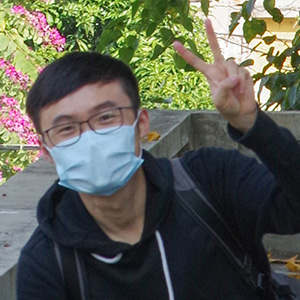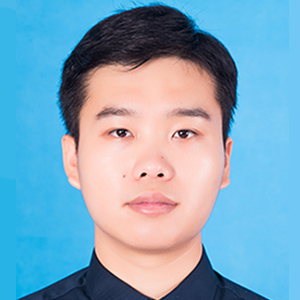NUS-SUTD PhD Symposium in Architecture

HISTORY AND THEORY
Time: 09:30 AM – 12:00 PM
Venue: Seminar Room 05, SDE1 Floor 4
Reviewers: Will Davis and Daniel Joseph Whittaker
LISHEN FENG
THE TEMPLE OF LONGEVITY: AN EXAMPLE OF CROSS-REGIONAL GARDEN CULTURE IN CENTRAL GUANGDONG
Abstract: The early modern origins of gardens in central Guangdong are still a puzzle because most gardens built before the 19th century in this region are no longer extant or have left us with any pictorial evidence. In Guangzhou, a few exceptions have remains or historical images. One of them is the garden in the Temple of Longevity, which was built in the late 17th century by Shilian Dashan, a literary abbot from Jiangnan, but vanished in the early 20th century. Thanks to the existing historical literature, engravings, paintings and photographs of the temple garden, we are able to acquire a basic understanding of its original design and changes over time. Although the temple with its garden was culturally linked to Jiangnan and was sometimes perceived as being in Jiangnan style, it is debatable how many features in the garden were novel to Guangzhou at that time and whether its contemporaries were aware of the regional differences. To reveal how the Jiangnan abbot’s ideas were presented in his Guangzhou garden, this presentation will discuss the regional and historical characteristics of the garden in the context of the contemporary garden culture in both Guangdong and Jiangnan.
Speaker: Lishen FENG
 |
Feng Lishen 冯立燊 is a second-year Chinese student studying the early modern garden history of central Guangdong. After two years of practice in architectural conservation and indigenous building design in Foshan, he studied and received his MLA degree at the University of Hong Kong. His research focuses on gardens and indigenous architecture in China, particularly in regions beyond the country’s economic and political centres.
Ee Bee GAN
SOCIETY ENGAGED CONSERVATION: KEEPING CHINESE VOLUNTARY ASSOCIATIONS ALIVE IN SINGAPORE
Abstract: In light of nation building during post-independence period, there were tensions for precedence over generic Chinese culture than respective dialect subculture. Chinese voluntary associations faced predicament as their functions are mostly relevant to ethnicity. These organisations are variably empowered or dispossessed in modernity conditioned by different organisational circumstances. The establishment of Singapore Federation of Chinese Clan Associations (SFCCA) in 1986, however, aims to serve the larger Chinese populace in Singapore while helps other clan associations, in fostering a stronger social harmony and national cohesion as well as promoting Chinese culture. This research focuses on society engaged conservation which emphasizes people-centred approach to keep the integrity and authenticity of clan heritage alive. This research revisits the notion of ‘community’ within the field of conservation, particularly for clan associations which is often unidentified, with a close examination of heritage discourses: How can heritage capacities be created or reinforced? What constitutes satisfactory ‘community engagement’? How can we understand the role of communities in capacity building? (Wijesuriya, Thompson and Court 2017:38). Adopting an argument underpinned by Jokilehto’s notion of ‘continuity’ (2017:22), this research proposes a more pragmatic practice and conditions of community engagement to frame the associations’ existentiality, constitutionality, and functionality for the purpose of their inheritance.
Speaker: Ee Bee GAN
 |
Ee Bee is a current doctoral student in NUS Architecture. Founder of Neumind, Ee Bee is building capacity on heritage conservation and education initiatives through her social enterprise for preserving Singapore’s cultural heritage since 2003. A member of Board of Governors in Nanyang Technological University-Chinese Heritage Centre since 2014, and a recipient of Patron of Heritage Awards 2016 by National Heritage Board. She spearheaded the establishment of Gan Heritage Centre under Gan Clan Singapore as the Centre Director and Curator, which has earned it inclusion on Museum Roundtable of National Heritage Board, Singapore and International Council of Museums, UNESCO, France.
Zihao WONG
ASSEMBLING THE INTERTIDAL: LANDSCAPE, LIMINALITY, IMAGINATION
Abstract: The intertidal zone is the fluctuating part of the coast that becomes exposed during low tide, and inundated in high tide. Precariously part-ocean, part-ground, and part-salty air, these liminal qualities extend to details in the landscape. Singapore’s Tanjong Rimau, on Sentosa island, is a remnant of historic intertidal landscapes that have been largely transformed into harbourside infrastructure. In its deteriorated state, urban residue including construction debris, coral rubble and ocean litter have become regenerative grounds for adaptive ecologies—constituting part-geological fossil, part-vegetal matter, part-urban detritus, part-living thing.
A richer means of exploring liminality as site qualities, and as creative process to think and intervene with this transitional landscape is necessary, given that the intertidal is presently seen as instrumental to Singapore’s mitigation efforts against sea level rise. Beginning with representation techniques, my research reconsiders the map’s inability to fully represent and visualise the intertidal, devising new site drawings to reimagine the future coast through its liminalities. What constitutes the intertidal, and how might design engage with its futures? This presentation assembles the various meanings explored of the ‘intertidal’, expanding on ‘liminality’ as nature-culture entanglements. It also suggests how these readings of ‘intertidality/liminality’ might structure a design practice for Tanjong Rimau.
Speaker: Zihao WONG
 |
Zi Hao WONG is a PhD candidate at the National University of Singapore’s Department of Architecture. His work is currently exhibited at Prep-room: Intimate Landscapes, in the NUS Museum. His design-led research utilises drawing, making, and writing to think about the intertidal coast as a landscape at risk, probing what might change for the roles of architecture and design in our environmental futures. He is also an architectural educator, and co-founder of Singapore-based architecture and design practice Studio Super Safari.
Mengzhi LING
URBAN FABRIC, OWNERSHIP AND URBAN LIFE: MECHANISMS OF TENSIONS AND NEW AVENUES FOR QUERY IN RETAIL AREAS
Abstract: Through exploring the mechanism of how urban fabric and ownership take effects on urban life in urban spaces, this study aims to provide a different way of understanding the impact of the built environment on the human experience. It is achieved by a qualitative approach involving documentary study, in-depth interview, observation and drawing for data generation, as well as thematic textual analysis, mapping and narrative for sense making of data. This presentation demonstrates the ongoing fieldwork in Yong Qing Fang, Guangzhou, China. It reveals how urban fabric and ownership matter to urban life. The field data show that, through delimiting boundaries and defining usage of urban spaces, the governance of concentrated ownership wrote off some benefits of the people-oriented physical environment; while, the street-based fabric triggered the adaption of the governing actors (to the physical form), which mitigates the “negative impacts” of the concentrated ownership on urban life. Further, the mixture of ownership of properties sparked conflicts between different stakeholders, and yet stimulated possibilities to breed a “better urban life”.
Speaker: Mengzhi LING
 |
LING Mengzhi is a PhD candidate at the Department of Architecture, NUS. She has a bachelor’s degree in urban planning from Guangzhou University, China. Her research interests include urban planning and design, urban form, urban space and life, right to the city, theory and policy of land, finance and management of real estate, as well as ethnography. She loves walking and drawing in cities as well as hiking and breathing in nature.
Huiyang QI
THE EVOLUTION AND FUTURE OF SINGAPORE’S NEW TOWN STRUCTURAL MODEL
Abstract: As an efficient planning tool, “New Town” guidedthe 20thcentury global urbanization process. The principles of new town planning originated inHoward’s “Garden City”, evolved with new ideas such as Perry’s “Neighbourhood Unit” and Calthorpe’s “Transit-oriented Development”.The experiments of new town began in the United Kingdom, prevailed in the United States and the Soviet Union in the mid-20th, influenced the subsequent rapid urbanization in Asia.Andin Asia, Singapore triumphed new town developmentbothquantitatively and qualitatively (1970-1990s).In the process, Singapore combined the tested principles and local research to form the new town structural model, and utilized the model to guide the subsequent development.From Toa Payoh to Punggol, the model is constantly tested and redeveloped, however, the model has not been redeveloped for at least 15 years.Therefore, this study aims to reviewand improve the model. The review will be conducted fromthree perspectives: 1) Planned: How was the model developed and tested? 2) Unplanned:What issues are residents currently facing, and what are residents try to appropriate in the neighbours? 3) Trends:What current trends (technical, demographic, etc.) need to be addressed in the model?
Speaker: Huiyang QI
 |
Huiyang Qi is a PhD student of Architecture in NUS CDE. My research interests include New town planning model and neighbourhoodregeneration. I pay special attention to Singapore and cities in Northeast China. Before pursuing my PhD degree, I received a master’s degree in Urban Planning from NUS and a bachelor’s degree in Civil Engineering from NTU. I have 3 years of working experience in contractors and developers.